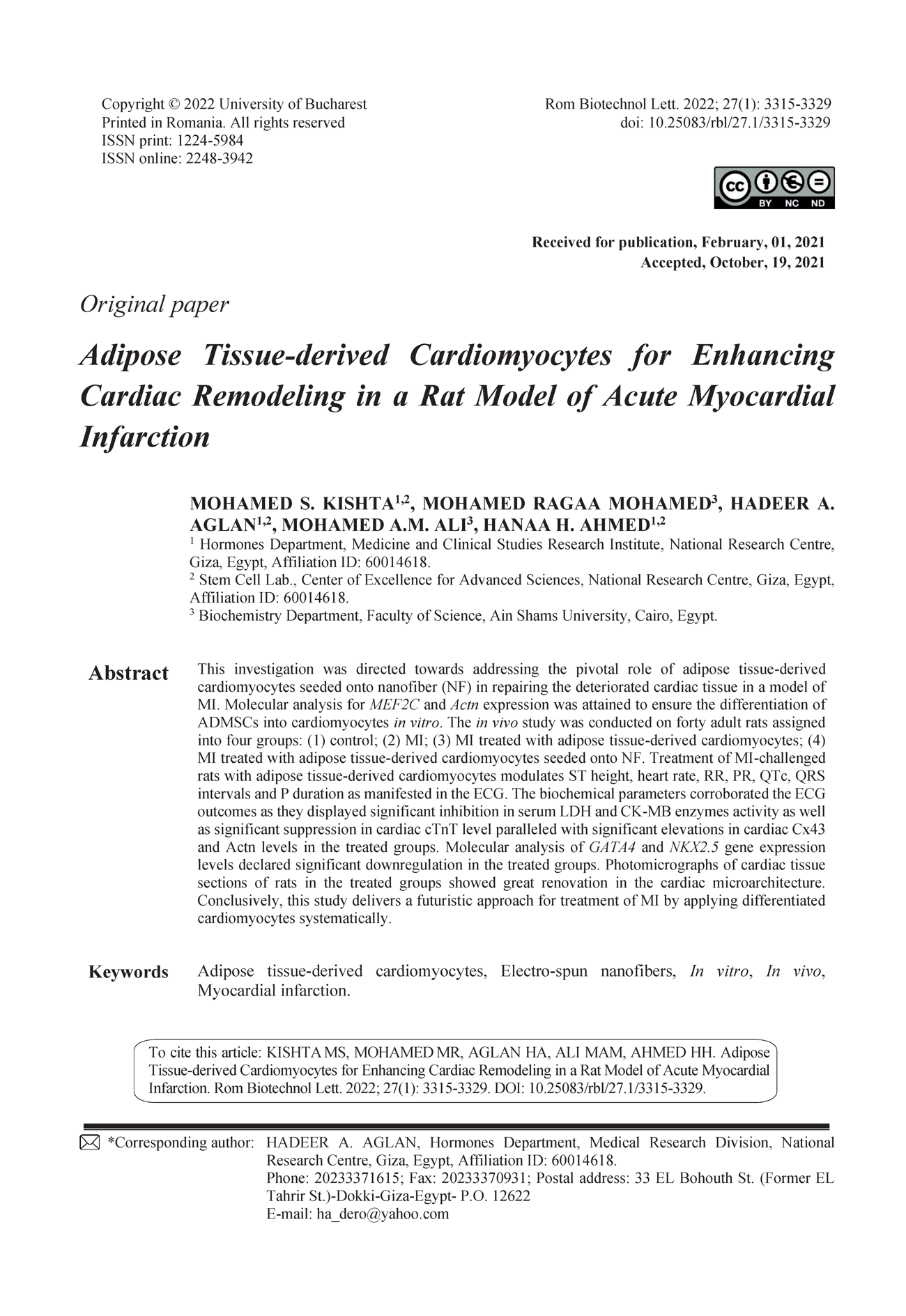Adipose Tissue-derived Cardiomyocytes for Enhancing Cardiac Remodeling in a Rat Model of Acute Myocardial Infarction
DOI:
https://doi.org/10.25083/rbl/27.1/3315-3329Keywords:
Adipose tissue-derived cardiomyocytes, Electro-spun nanofibers, In vitro, In vivo, Myocardial infarctionAbstract
This investigation was directed towards addressing the pivotal role of adipose tissue-derived cardiomyocytes seeded onto nanofiber (NF) in repairing the deteriorated cardiac tissue in a model of MI. Molecular analysis for MEF2C and Actn expression was attained to ensure the differentiation of ADMSCs into cardiomyocytes in vitro. The in vivo study was conducted on forty adult rats assigned into four groups: (1) control; (2) MI; (3) MI treated with adipose tissue- derived cardiomyocytes; (4) MI treated with adipose tissue-derived cardiomyocytes seeded onto NF. Treatment of MI-challenged rats with adipose tissue-derived cardiomyocytes modulates ST height, heart rate, RR, PR, QTc, QRS intervals and P duration as manifested in the ECG. The biochemical parameters corroborated the ECG outcomes as they displayed significant inhibition in serum LDH and CK-MB enzymes activity as well as significant suppression in cardiac cTnT level paralleled with significant elevations in cardiac Cx43 and Actn levels in the treated groups. Molecular analysis of GATA4 and NKX2.5 gene expression levels declared significant downregulation in the treated groups. Photomicrographs of cardiac tissue sections of rats in the treated groups showed great renovation in the cardiac microarchitecture. Conclusively, this study delivers a futuristic approach for treatment of MI by applying differentiated cardiomyocytes systematically.





